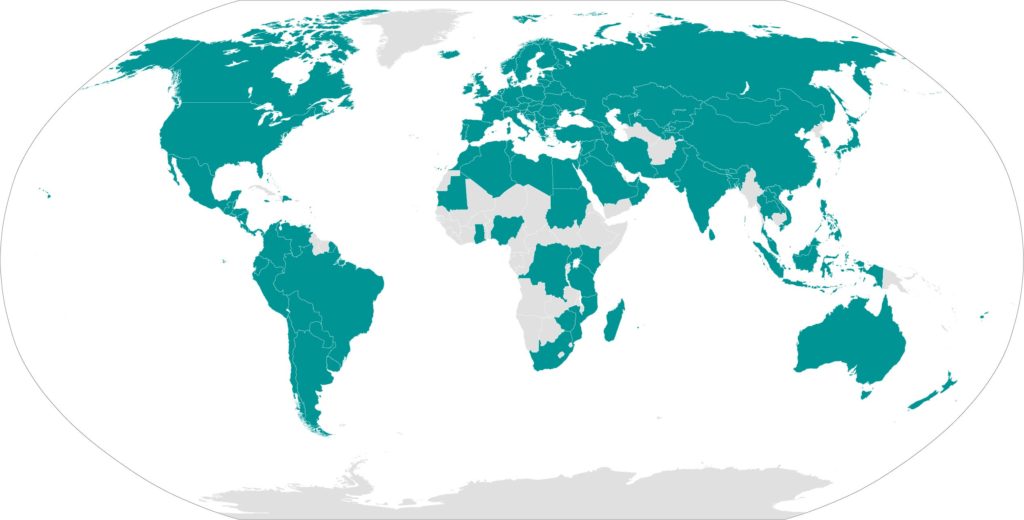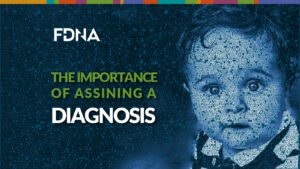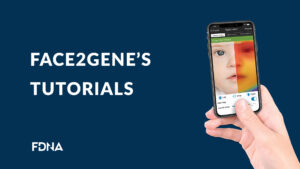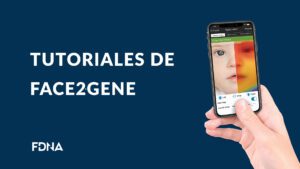At FDNA, we’re making precision medicine a reality by crowdsourcing knowledge and integrating next-generation phenotyping (NGP) technologies into every patient evaluation. NGP is the computational capture, analysis and integration of phenotypic data into health analysis—a hallmark of FDNA’s technologies. In 2017, our Face2Gene application turned five, and alongside our collaborators, we marked some serious milestones: the launch of two new products in the Face2Gene suite, partnerships with several of the world’s largest genetic testing labs, expansion into Asia, and new discoveries for dozens of diseases. Here are some highlights from 2017.
Advocacy: “Nobody needs to wait a single moment before starting to improve the world.”
Every month during the 2017 Year of Discovery, clinicians, labs and patients focused on a specific disease category to build a repository of rare disease “big data.” Sponsors including GeneDx and Blueprint Genetics helped drive patient case uploads by matching each case loaded with a charitable donation to patient advocacy charities. As a result of the increased community support, Face2Gene improved its recognition and understanding of the phenotype of dozens of diseases, including Sanfilippo Syndrome and a variety of craniosynostoses.
The Year of Discovery launched on 2017’s World Rare Disease Day. Look out for another exciting announcement during this year’s February 28 event.

In 2017, people in over 125 countries used Face2Gene
Integrations: Better together
Across the globe, genetics labs including Ambry Genetics, GeneDx and Blueprint Genetics are integrating Face2Gene into their workflow. With the addition of these labs, over 70 percent of clinical geneticists worldwide are able to harness the power of artificial intelligence and computer vision to highlight genetic variants correlated with underlying diseases, increasing the diagnostic yield of genetic testing for their patients. Dramatically, we should say: preliminary results from the PEDIA study indicate adding phenotypic data and facial analysis can triple the diagnostic yield from genetic sequencing alone, in some cases.

Over 70 percent of clinical geneticists now use Face2Gene.
We’re building relationships internally, too: in 2017, the FDNA Team grew by 23 people, full and part time, magnifying the human brain power behind the Face2Gene AI.
Product expansion: Suite, suite progress

The Face2Gene family grew by two apps in 2017.
These integrations are made possible by the latest additions to the Face2Gene suite. Genetics labs can use Face2Gene’s new LABS capability to securely transmit next-generation phenotyping and facial analysis insights directly into the molecular interpretation pipeline to increase diagnostic speed and accuracy.
Using the Face2Gene RESEARCH app, clinicians can use de-identified information to create cohorts and test hypotheses. Many abstracts and publications are resulting.
In the News: Our ears are burning
Artificial intelligence has been a hot topic in the news this year. Cygnis Media highlighted a range of ways machine learning and artificial intelligence are changing modern medicine, from personal trainers in biosensing earbuds to eye-tracking technology that can identity Autism Spectrum Disorders early. A special edition of TIME investigated advancements from smart-home thermostats to self-driving cars, and even how etiquette changes when we interact with machines.
FDNA found itself mentioned in dozens of high-profile articles, including the cover story of Fortune’s future issue, The Doctor Will See You Now, and the Economist’s September issue, What Machines Can Tell From Your Face. WIRED called Face2Gene “a breakthrough method… the most promising to deliver AI’s 50-year-old promise to revolutionize medicine.”
Partnerships: Left side, strong side
FDNA’s network of databases, researchers, and clinicians continued to grow this year. POSSUMWeb, a leading dysmorphology database, announced in October that it would partner with FDNA for integration and distribution of its over 40,000 images through Face2Gene LIBRARY. The Greenwood Genetic Center (GGC) announced its intention to analyze thousands of undiagnosed cases with Face2Gene, with the goal of finding new leads for unsolved cases. And at the end of 2017, Vanderbilt University Medical Center announced their use of Face2Gene as part of the NIH Undiagnosed Disease Network.
FDNA partnered with Cincinnati Children’s Hospital and used photos of patients with confirmed PACS1 diagnoses to train Face2Gene on disease-related features and as a result, the system reached 96 percent performance.

Face2Gene has now identified over 2,000 syndromes.
Future Plans: To boldly go
With all this momentum, FDNA is excited to launch a new effort to use FDNA’s artificial intelligence and deep learning technology to develop precision medicine approaches for diagnosing and treating disease. Details to come on World Rare Disease Day.



